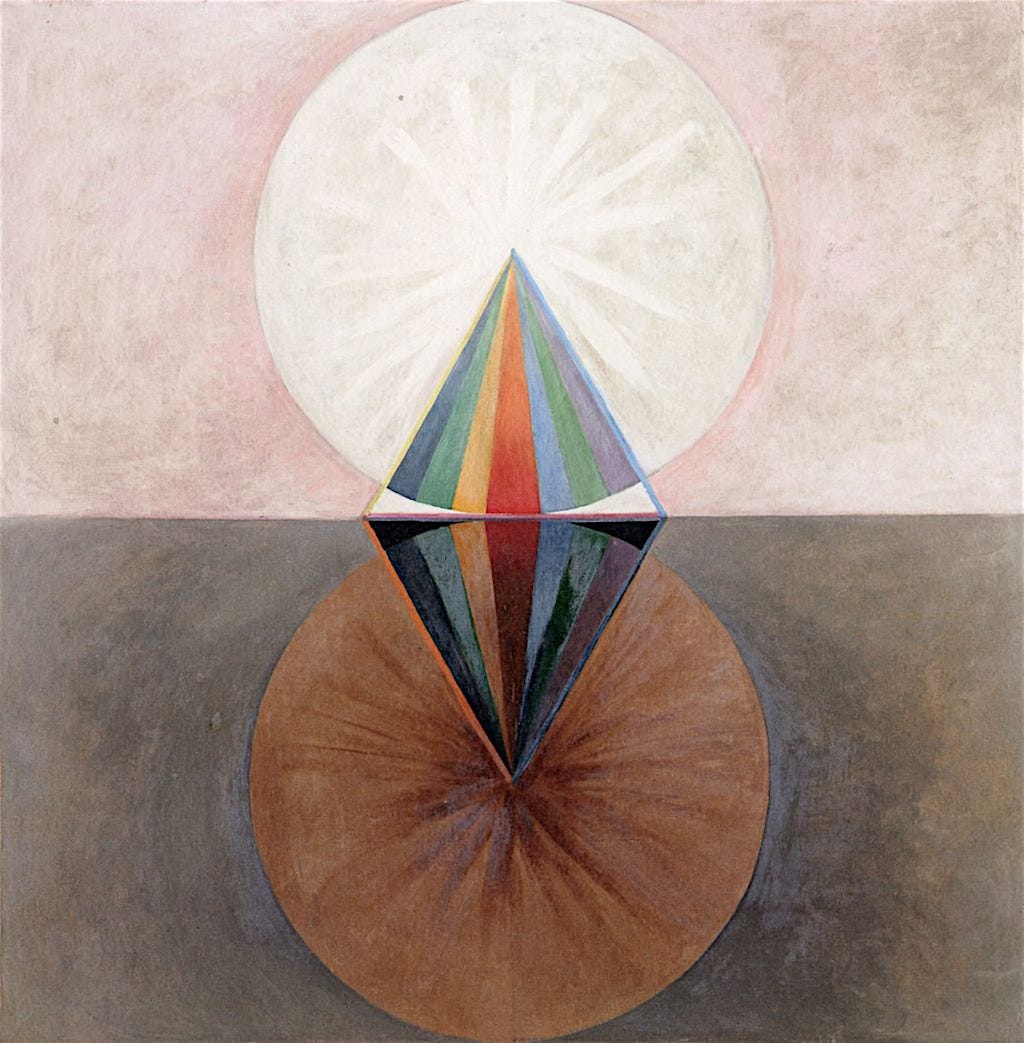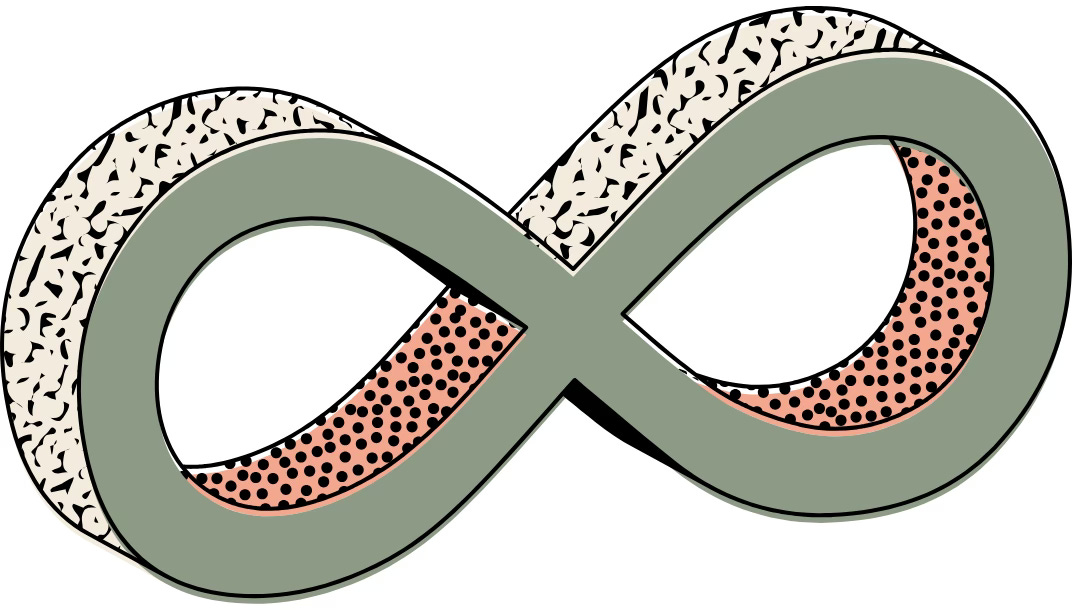Infinity & Beyond: how to hold it together with the leminiscate symbol
The infinity sign, lemniscate, or "lazy 8" symbol has power and meaning that can be supportive for navigating tough times. Read and practice with me here.
For the past two weeks, I’ve been struggling with what feels relevant to write about . I’m enraged, I’m depressed, I’m exhausted, and I’m also full of love, connection, and finding what feels like the right action for me. Leaving Instagram meant that I also felt the pressure to share something here— but I don’t want it to be just more noise, ya know?
It feels to me as though one of the biggest challenges is knowing how to hold all these things— so many emotions that feels like they can’t exist together— at once. Rage and love. Grief and hope. Exhaustion and a burning need for activism. Tuning out of news for our own sanity, and somehow staying informed. Leaving social media, but desiring connection with others who share our values.

Of course, it’s far easier to swing one way or another; to give in to black-and-white, all-or-nothing, us-and-them thinking. Or to throw ourselves into an impassioned fight without cultivating the wisdom of self-care; or to say screw everyone, I can’t afford to have my heart broken by this country again. Or to project our shadow outward and say, this is their fault. I did my part.
In fact, writing you today from the US, I believe that it’s this very division— a collective inability to recognize and hold our opposites within our national identity— that has led us to our current democratic crisis.
Still, it’s the ability to hold these conflicts within ourselves, no matter how painful, that allows us to grow. Jung believed that this uncomfortable tension was precisely the catalyst that created the chemical reaction to generate growth.
“Out of [the] collision of opposites the unconscious psyche always creates a third thing of an irrational nature, which the conscious mind neither expects nor understands. It presents itself in a form that is neither a straight ‘yes’ nor a straight ‘no.’”
—CG Jung, “The Psychology of the Child Archetype,” CW 9i, par. 285.
We can use our own discomfort to cultivate personal change— that “third thing” Jung speaks of— so we can effect the larger systemic change these times desperately need.
How to hold tension when the opposites would tear us apart
According to their bumper stickers, my neighbors hate who I am. They deny the rights of people I love. They would gladly defecate on the very values I stand for (yeah, there’s a bumper sticker for that too). Yet they smile and wave, and even offer to help if they see me struggling with my trash cans in the driveway. This contradiction is a real mind*ck. How do I hold their hate and their love? How do I love them when I want to hate them?
Initially, when working with the opposites, it’s far easier to swing one way, and then another. I love them, then I hate them. I’m tired, now I have energy. All or nothing. We may not be able to feel both at once, but we can ride the waves back and forth without denying either reality.
A beautiful symbol for this is the lemniscate, or infinity symbol (♾️):
The power of the feminine, in symbol form
The lemniscate, or infinity symbol, shows us how to oscillate between two seemingly separate domains. It’s a symbol of the feminine (that’s the feminine principle, eros, or relatedness, separate from gender). In this symbol, there are no sharp or straight lines, but the roundness of two circles that we could imagine unwinding to become one integrated whole.
Jung said, “A term or image is symbolic when it means more than it denotes or expresses. It has a wider ‘unconscious’ aspect – an aspect that can never be precisely defined or fully explained” (CW 18). You might remember the symbol of the steel mace in my client’s dream from last week’s post. This symbolic weapon helped her feel strong and powerful enough to stand up to her dream persecutors.
The symbol allows us to feel something that thinking cannot accomplish. To try to define or explain how to hold two opposite positions (through logos, the masculine principle) is simply beyond cognitive possibility. But we can feel (through eros, the feminine principle) how to move smoothly between these opposites.
Embodied lemniscate practice
The original idea for the infinity symbol practice comes from Jane Clapp. In the Jungian Somatics Movement for Trauma course that we co-facilitate, we share a simple practice that can allow folks to orient to the present moment, settle, and find a sense of re-balance in their bodies. The oscillation mirrors the rise and fall of a responsive nervous system; it can help to re-pattern us back into flow when we are “stuck.”
The challenge of drawing this symbol is more complex than it looks, too. The circular shape and acceleration and deceleration require the focus of our prefrontal cortex, bringing us back into presence when we’re distracted or dissociated.
Moving between opposites, it mirrors how we can move from pain to pleasure, or trauma to healing. And it can be as simple as tracing an infinity symbol with your finger! Try following along with me below:
Of course, there are other ways to incorporate this symbol somatically. Drawing it, especially with both hands, allows for a whole-body experience of rhythmic flow. This is an important resource in Cornelia Elbrecht’s (Sensorimotor Trauma Art Therapy) Guided Drawing technique. Maybe you can tell from the video below how good this feels in my body:
The infinite loops of the lemniscate can also be traced with a rope, or with Indian clubs (this is also a favorite practice for me!):
From body to mind and back
As always, I want to be really clear that this isn’t a quick fix or a life hack, but a practice that might be useful to you in your own process. If you want to work with the lemniscate, you might start by identifying the opposites you’re working with. If you’re not sure what these are, you might identify an uncomfortable feeling (sensation, emotion, or thought), and then ask yourself what the opposite of that would be. Now, hold these two in your awareness as you begin to create the infinity shape. Feel how you can swing back and forth. If you lose that awareness as you move, that’s fine— let yourself simply experience the sensations of your body as you create the lemniscate.
Remember that the power of the symbol lies not in its rational or logical sense, but in the felt, embodied sense— so there’s something quite potent about simply letting yourself feel how you can swing back and forth between these two.
Afterward, pause and notice your experience. Has your mood shifted? Thought content changed? Here we’re using our logical left hemisphere to take note of changes without trying to analyze or “make” anything happen. It might be helpful at this point to do some journaling as well.
Finally, you might explore using this practice as a way to tolerate discomfort that arises when you feel caught between opposites, or when you find yourself swinging to an extreme. Think of it as an embodied meditation— not trying to fix anything, simply giving space to let it be.
It’s in this holding— riding the discomfort of up and down, back and forth— that change happens, and Jung’s “third thing” is born. Without consciously trying to make anything happen, we find that we’ve arrived at a new point of view, or a new sense of the problem, that can give us the courage and the strength to do what we know is right for us. ∞






Also Laura, One of the reasons that I haven’t started writing on Substack yet is this idea that I don’t have anything to say that hasn’t already been said. You referenced that this morning by not wanting to be part of the noise. I’ve started to shift my attention to focussing on the benefit of reaching one person. You really reached me today and really contributed to my well-being. Thank you 🙏
Laura your post arrived at the perfect moment 😉
I have worked with the infinity symbol for at least 20 years without ever knowing what it even means! Imagine! I understand well, holding the tension of opposites, but I am blown away at the simplicity and the powerfulness of the practice that you presented here. Deeply grateful. ❤️🙏